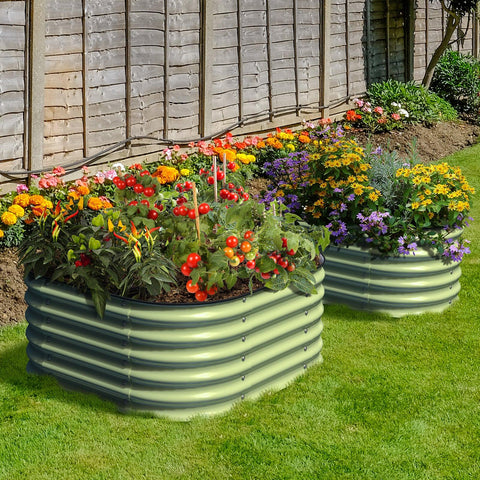5 Tips from Olle Garden beds Selecting Seeds for A Vegetable Garden
Although this is not the time to plant seeds in your garden - unless you are doing container gardening indoors - it is a good time to consider how to choose seeds for your garden. Now, it is no secret that successful gardening starts with good seeds. What is the best way to organize, plan and shop when looking for crops to grow this year? Read here are some things that you should know when It comes to Olle Garden Beds!
Although this seems to be a simple and clear process, there are many ideas when planning your future garden. Find three tips for choosing seeds for your garden to ensure a smooth planting process!

Be arranged in good order
Before you start looking around for new seeds, you need to experience what you already have! It is meaningless to waste perfect seeds, so we must screen the seeds of the previous season. Don't forget to check the dates on the packages to make sure they are not expired.
In terms of organization, ensure that all seeds are clearly marked and separated according to when they expire. You can even organize them according to when they are planted to make planning your garden easier. In this way, you will know exactly the stock planted each month, so you will not buy too much in the end.
Collect your information
Before starting anything, you need to know when the first frost is predicted in your area and where you live.
If you grow in winter or before the last predicted frost, you can sow in containers indoors or in greenhouses. Vegetables you can grow in the cool months include root vegetables, tomatoes, salad vegetables and herbs.
After the last frost forecast, you can plant vegetables and rhizome vegetables in outdoor elevated garden beds, containers or directly in the garden. When autumn comes and the temperature drops, plant salad vegetables such as collards and beets, broccoli and broccoli, and root crops such as carrots. They will be ready for the spring harvest!
Test your seed
Suppose you have a raffle filled with old seeds - what should you do with them?
If you are not sure whether your seed is still good, please conduct a germination test. Use a separate container for each variety, fill a bowl with warm water, and then put the seeds in it for about one to two days. If the seed floats to the top, it is not feasible. If you think the other seeds in the package may be OK, you can perform this process again a few days before you plan to plant them. Throw away the floating seeds and immediately plant those seeds that do not float!
Make a list (check twice)
After you have finished your seed, it is time to decide what you need. Consider the space you have, your favorite varieties, and the pollinators you want to attract, and plan how to integrate everything into your garden. Decide when to plant and harvest different vegetables so that you know what will be in the garden at what time of the year.
As you scroll through the catalog to select new seeds, review the care required for each vegetable. Consider where to plant them and whether suitable conditions can be provided. In this way, you can also determine which plants are closest to each other. You need to find seeds suitable for companion plants, such as tomatoes and basil.
Planting the seeds you planted before, you know that performance is always a good choice. There are many common high-performance vegetables that are very suitable for beginners, such as lettuce, green beans and peppers. Choose the vegetables you like and consider how much you will eventually consume. Planting vegetables that are not often sold in stores, such as tomatoes, is a good way to expand your taste.

Purchase time
Ordering seeds early in the winter before they sell out is the best way to ensure that you plan your garden and are ready for spring. Always shop from trusted sources such as garden centers, local farmers, and well-known catalogs.
When shopping, look for open pollinated seeds that grow exactly like their parents. This means that you will always know exactly what you got. If they cross pollinate with another open pollinated plant, they can also be hybrids. Seed packs marked as hybrids are intentionally created, but the next generation of plants will not grow the same way.
Transgenic seeds are bioengineered and cannot be produced naturally. Since there are many uncertainties surrounding gmos and potential health risks, it is best to avoid these seeds.
Store garden seeds
No matter how well you plan your garden, there may be seeds left at the end of the season. Of course, you can also get the seeds from the plants in the garden. You need to keep them until next year. In addition, it is important to store seeds properly until planting to maintain their shelf life.
You can store loose seeds in seed envelopes, jars, and sealed containers. No matter how you choose to store your seeds, always keep them in a cool, dry place.
Seed!
Whether you want to take the lead in the growing season, plant some winter crops this year, or plan ahead for the garden next year, organizing and purchasing new seeds is the first place to start. The seeds you plant form your garden, so it is important to use healthy and fresh seeds, but you also need to plan carefully to ensure that everything you buy is suitable!
